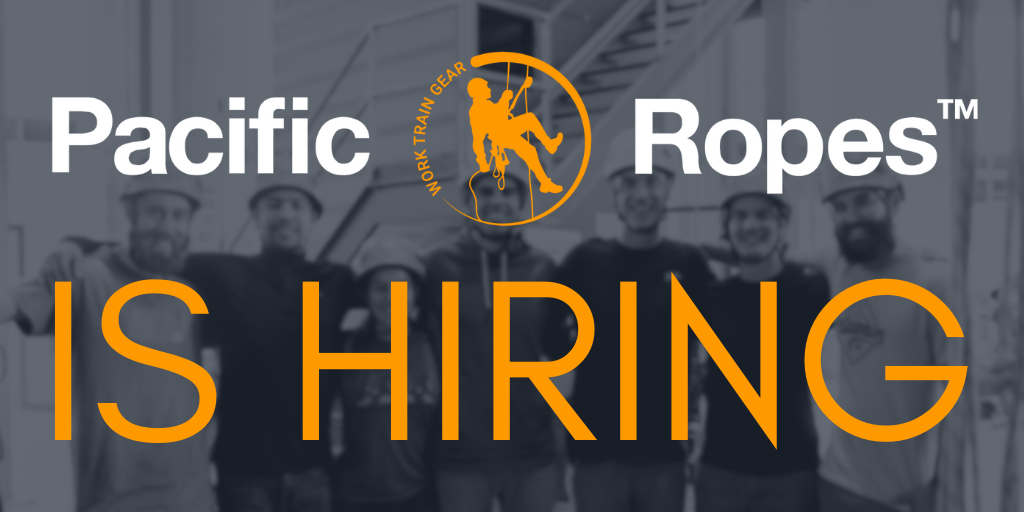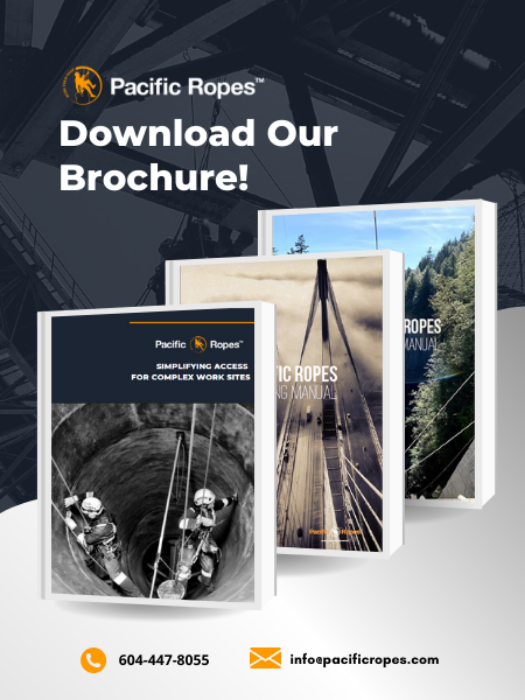**DISCLAIMER: This is not the official WorksafeBC website. The posts below are merely our interpretation and not official WorksafeBC regulation. To make sure you comply, please visit https://www.worksafebc.com/en.
Near the bottom of the WorkSafe BC page on Rope Access regulations, Part 34, there’s a table with a list of standards. This table may feel immediately intimidating and it is understandably easy to scan through, but this is very important information and you should know what these combinations of letters and numbers mean.
So let's get into it.
How To Read a Standard
A standard is a document that outlines a set of rules and guidelines that have been established and agreed on by a governing body, to ensure the maximum level of order and/or safety to the consumer.
Every standard includes an acronym for the governing body that established the guidelines. Here are a few of the big ones:
- CSA (Canadian Standards Association)
- EN (European Norms)
- AINSI (American National Standards Institute)
- NFPA (National Fire Protection Agency)
- UIAA (International Climbing and Mountaineering Federation)
If a piece of equipment doesn’t have a CSA standard, we can go by EN. A piece of equipment could also have both. In that case, we go by the relevant standard for the country of our operations.
After that there are a series of letters and numbers, which indicate the standard number and occasionally the date of the latest revision. This allows for easy tracking.
Did You Know: Every piece of gear you use gets its own file, which lists information like the date of purchase, its certifications (standards), individual tracking number, and inspection history. Learn more.
As you'll see below, a piece of equipment could meet two different standards within the same association. Each of these standards relate to the a different use of said equipment.
If a piece of equipment has earned a standard, that means it complies with the minimum safety and use regulations outlined by that governing body.
Keep in mind, different standards from different governing bodies could have different criteria. And a single piece of equipment could hold two different standards from the same governing body, each demonstrating that the equipment meets their requirement for a specific use.
To get a better understanding of what a standard specifically guarantees we'd encourage you to read up on it (we'll explain how below, near the end of this post).
Here are the standards WorkSafe BC outlines in Part 34, Rope Access as being necessary for the equipment you use.
Standards for Equipment Used in Rope Access Systems
Anchors
- CAN/CSA Z259.15-12 - Anchorage Connectors
- CAN/CSA Z271-10 - Safety code for suspended platforms
- EN 795:2012 - Personal fall protection equipment — Anchor devices
Connectors
- ANSI/ASSE 359.12-2009 - Connecting Components for Personal Fall Arrest Systems
- CSA Z259.12-11 - Connecting components for personal fall arrest systems (PFAS)
- EN 362:2004 - Personal protective equipment against falls from a height — Connectors
- EN 12275:2013 - Mountaineering equipment — Connectors — Safety requirements and test methods
- UIAA 121 - Mountaineering and Climbing Equipment — Connectors/Karabiners
Energy Absorbers
- EN 355:2002 - Personal protective equipment against falls from height — Energy absorbers
Harnesses
- CAN/CSA Z259.10-12 - Full body harnesses
- EN 361:2002 - Personal protective equipment against falls from a height — Full body harnesses
- EN 813:2008 - Personal fall protection equipment — Sit harnesses
- EN 12277:2007 - Mountaineering equipment — Harnesses — Safety requirements and test methods
- UIAA 105 - Mountaineering and Climbing Equipment — Harnesses
Lanyards
- EN 354:2010 - Personal fall protection equipment — Lanyards
Rope
- Cordage Institute CI 1801-07 - Low Stretch and Static Kernmantle Life Safety Rope
- EN 892:2012 - Mountaineering equipment — Dynamic mountaineering ropes — Safety requirements and test methods
- EN 1891:1998 - Personal protective equipment for the prevention of falls from a height — Low stretch kernmantel ropes
- NFPA 1983 - Standard on Life Safety Rope and Equipment for Emergency Services, 2012 Edition
- UIAA 101 - Mountaineering and Climbing Equipment — Dynamic Ropes
- UIAA 107 - Mountaineering and Climbing Equipment — Low Stretch Ropes
Rope Adjustment Devices
(including: ascenders, back-up devices, belay devices, descenders, fall arresters, and rope clamps)
- CAN/CSA Z259.2.3-12 - Descent devices
- EN 341:2011 - Personal fall protection equipment — Descender devices for rescue
- EN 353-2:2002 - Personal protective equipment against falls from a height — Part 2: Guided type fall arresters including a flexible anchor line
- EN 567:2013 - Mountaineering equipment — Rope clamps — Safety requirements and test methods
- EN 12841:2006 - Personal fall protection equipment — Rope access systems — Rope adjustment devices
- UIAA 126 - Mountaineering and Climbing Equipment — Rope Clamps
Where To Find Standards
The relevant standards will be listed on each piece of equipment. We go over this in our 'gear talk' during our training week, but it should be fairly easy to find.
You can also find the standards for a piece of equipment by going to www.petzl.com/CA/en/Professional/Verticality. Once on their website:
- Choose the category you're inquiring about (helmets, ascenders, etc), and then select the product you're using.
- Click 'see all technical content' and then download the technical notice(s).
You'll find the list of standards related to that piece of equipment in that document, along with information on how to clean the equipment, instructions and precautions for use, how to inspect it, and the length of its guarantee.
For a comprehensive list of how the standards apply to different types of equipment, go to Annex C of the ICOP.
Have You Read Through the Worksafe BC Regulations Yet?
Read through the section most relevant to rope access (covering equipment, head gear, anchors, etc) here:



